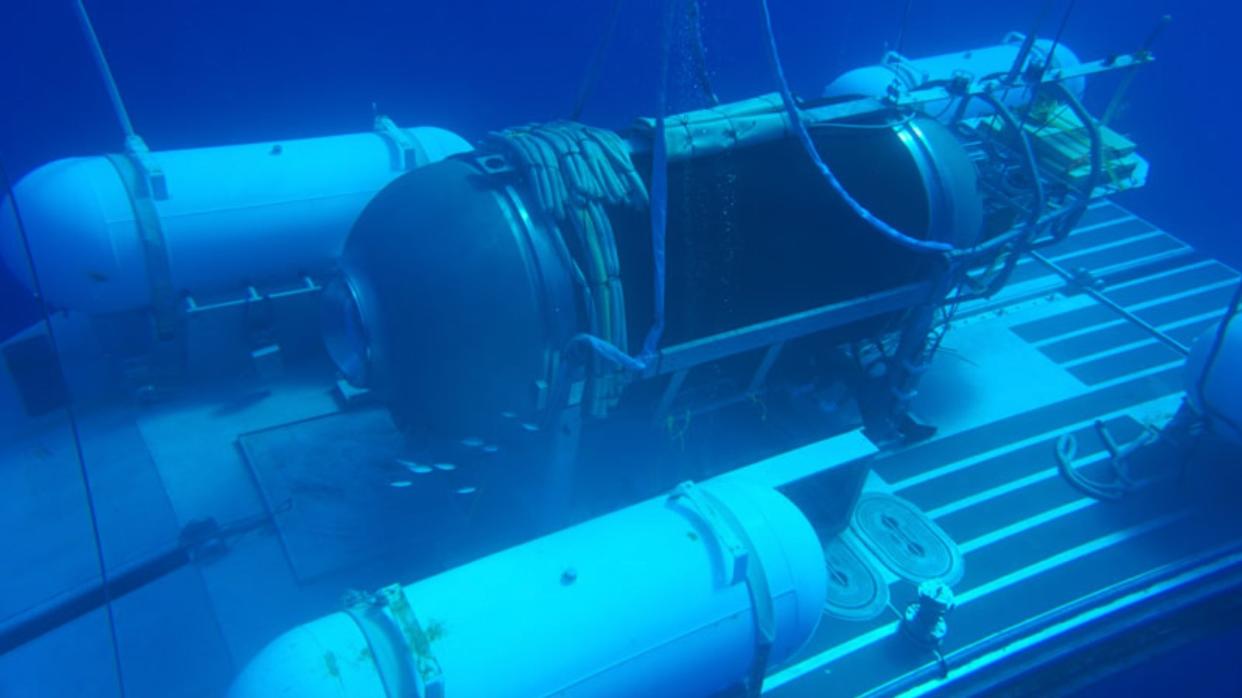Missing Titanic submersible built with NASA help

The submersible that went missing with five people on board during a dive to the wreck of the Titanic on Sunday (June 18) was built with NASA's help.
Washington-based company OceanGate consulted engineers at NASA's Marshall Space Flight Center in Alabama during the development of the deep-sea submersible, which is called Titan.
The collaboration came via a Space Act agreement with the agency, according to OceanGate.
"NASA's expertise in the design and automated fiber placement lay up of composite hulls was extremely valuable on this project," OceanGate founder and CEO Stockton Rush said in a March 2022 statement.
"The ability to construct Titan's pressure hull with aerospace-grade carbon fiber and manufacturing protocols results in a submersible which weighs a fraction of what other deep-diving crewed submersibles weigh," he added. "This weight reduction allows us to carry a significantly greater payload which we use to carry five crewmembers: a pilot, researchers and mission specialists."
Related: 10 extraordinary ocean worlds in our solar system (photos)
The NASA assistance isn't the missing submersible's only space connection. One of the people on board, for example, is businessman and explorer Hamish Harding, who flew to suborbital space with Jeff Bezos' rocket company Blue Origin in 2022.
Another crewmate on board the troubled Titan is Shahzada Dawood, vice chairman of the Pakistan-based conglomerate Dawood Hercules Corporation. Dawood is a trustee of the SETI (Search for Extraterrestrial Intelligence) Institute in Mountain View, California.
The other three crewmembers are Rush, Dawood's 19-year-old son Suleman and explorer and former French Navy diver Paul-Henry Nargeolet, according to the BBC.
Titan (which shares its name with Saturn's largest moon) has made a number of successful dives to and from the wreck of the Titanic, which famously went down in the North Atlantic during its debut voyage in 1912.
Planetary scientist Alan Stern, who leads NASA's New Horizons mission to Pluto and the outer solar system, went on one of those dives. Former NASA astronaut Scott Parazynski has made the Titanic-wreck trip as well, and he joined OceanGate's board of directors last year.
In addition, OceanGate said last week that SpaceX's Starlink megaconstellation would be providing internet service for this most recent Titanic dive.
Related stories:
— Pluto explorer deep dives to the Titanic
— Meet the crew of Blue Origin's NS-21 space tourism launch
— An aurora that lit up the sky over the Titanic might explain why it sank
The Titanic struck an iceberg and went down about 400 miles (640 kilometers) off the coast of Newfoundland, killing about 1,500 of the roughly 2,200 people on board. The wreck sits 2.4 miles (3.8 km) beneath the North Atlantic waves, making it difficult to get to. Indeed, the ship's final resting place wasn't even discovered until 1985.
Contact with the Titan submersible was lost Sunday about an hour and 45 minutes after it departed from its mother ship to descend into the depths, according to the BBC. (Submersibles such as Titan must be hauled to and from their drop zones, whereas submarines can make such trips on their own).
It's thought that the submersible had enough oxygen to sustain its crewmates for about 96 hours when it went missing. It's unclear what went wrong or where Titan is now, though an intense search is underway.

